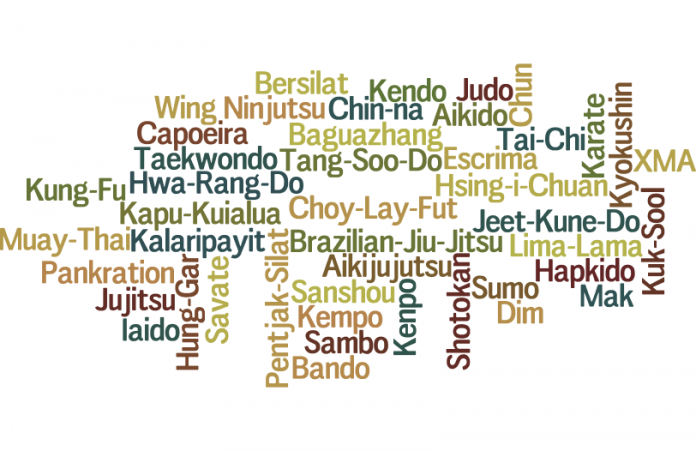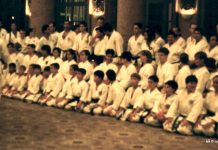There are many ways in which martial arts can be divided. Here are a few of them that might be useful to use in defining Martial Arts and discussing them. These are not necessarily consensus definitions but they are commonly held.
It is also useful to remember that very few of these martial arts are just one way or another . . . they are all mixtures of these elements in various degrees. When we say a style is “hard” what we mean is that the predominant expression of that style is hard. If we say Shotokan is linear, it does not mean Shotokan has no circular techniques.
“Sport” vs “Fighting Art” vs. “Exercise” vs. “Philosophy”
These are usually NON-useful comparisons because people tend to be very strongly opinionated on this matter. Most people want to think their art is an ancient “fighting art” and can be applied thus on the street. Some styles truly are all four, and to some degree all styles contain all four elements.
In discussions of a style it is most useful when people highlight which area or areas their style emphasizes.
“Linear” vs. “Circular”
This distinction refers to lines of movement, attack and defense. “Circular” styles use circular movements to block, attack, or move. Around and aside… “Linear” styles use direct, straight-on movements, attacks, or head-on blocks. In and out…
Styles can, and sometimes do, mix circular blocks with linear attacks. This is a subtle distinction and not absolute, but it gives some information.
“Soft” vs. Hard”
“Soft” styles tend to redirect energy, channeling and diverting momentum to unbalance an opponent, or to move them into striking range. They tend to be lower commitment and use less force. Thus, they are less likely to be unbalanced and can recover from redirection easier. Examples are Taiji, Aikido, Ninjutsu, or many Gongfu styles and sub-styles.
“Hard” styles tend to direct energy outward and meet energy with energy. They will tend to strike more, and deliver more force with each strike. Hard stylists will often damage with their blocks, turning them into attacks. They deliver more power, and thus are harder to turn aside, but they are higher commitment, and thus don’t recover as well from mistakes. Examples are Karate, Tae-Kwon-Do, Muay Thai, and some Gongfu styles and sub-styles.
“Internal” vs. “External”
“Internal” styles are styles that emphasize the more non-tangible elements of the arts. They utilize chi/ki/qi flow, rooting, and those elements which some people consider “mystical”. They tend to emphasize meditation, body control, perception, mind control (self, not others!), and pressure points. `Typically’ internal styles are soft. Taiji is an internal style.
“External” styles tend to emphasize body mechanics, leverage, and applied force. They tend to use weight, strength, positioning, and anatomy to optimal advantage. `Typically’ external styles are hard. Tae-Kwon-Do is an external style.
“Complete Art” or not
The term “complete art” is sometimes applied to arts that include strikes, kicks, throws, pressure points, and joint locks. The arts most often mentioned in this regard are some Gongfu styles, Jujutsu, and Hapkido. Although some arts contain more techniques than others, no art is “complete” in the sense that it includes all the important techniques from other arts. In general, every art has its strong and weak points, and each has something to offer to the lexicon of martial arts techniques.











